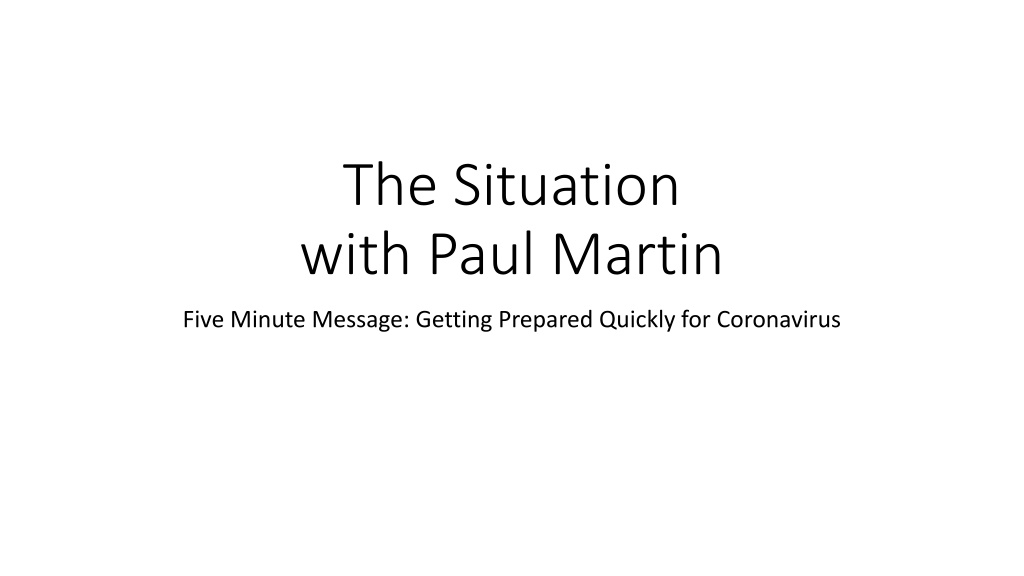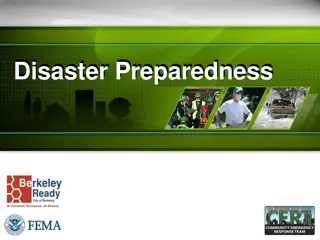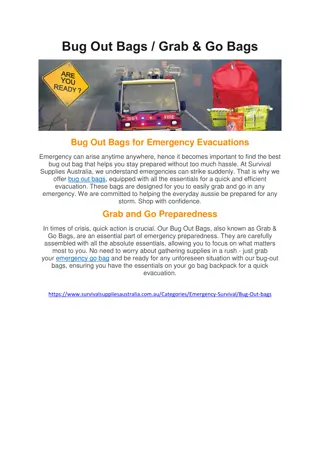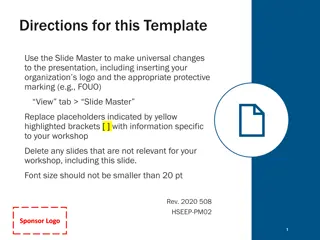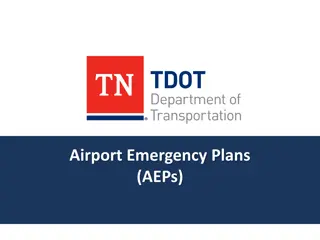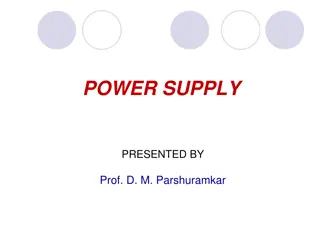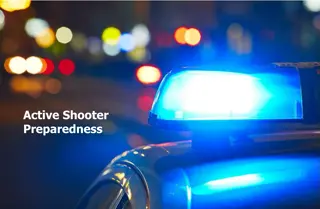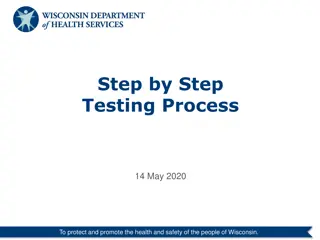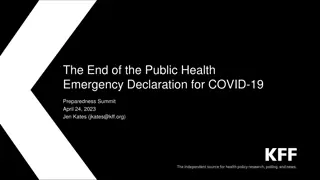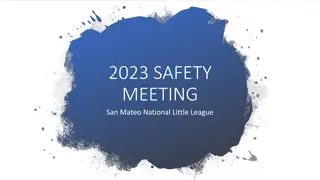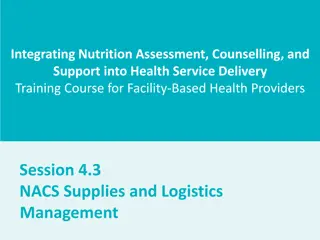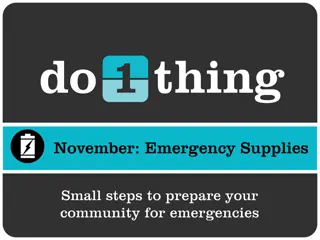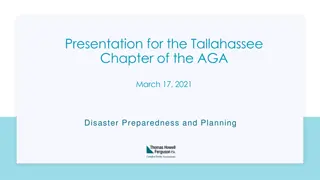Quick Preparedness for Coronavirus - Key Takeaways and Supplies You'll Need
Learn key takeaways for preparing for the coronavirus outbreak, such as identifying potential cases, addressing healthcare overload, and the necessity of nonpharmaceutical response strategies. Additionally, get a list of essential supplies required to tackle the situation effectively.
Download Presentation

Please find below an Image/Link to download the presentation.
The content on the website is provided AS IS for your information and personal use only. It may not be sold, licensed, or shared on other websites without obtaining consent from the author. Download presentation by click this link. If you encounter any issues during the download, it is possible that the publisher has removed the file from their server.
E N D
Presentation Transcript
The Situation with Paul Martin Five Minute Message: Getting Prepared Quickly for Coronavirus
Key Takeaways 1/3 More cases are likely to be identified in the coming days, including more cases in the United States. It s also likely that person-to-person spread will continue to occur, including in the United States. Widespread transmission of COVID-19 in the United States would translate into large numbers of people needing medical care at the same time.
Key Takeaways 2/3 Schools, childcare centers, workplaces, and other places for mass gatherings may experience more absenteeism. Public health and healthcare systems may become overloaded, with elevated rates of hospitalizations and deaths. Other critical infrastructure, such as law enforcement, emergency medical services, and transportation industry may also be affected.
Key Takeaways 3/3 Health care providers and hospitals may be overwhelmed. At this time, there is no vaccine to protect against COVID-19 and no medications approved to treat it. Nonpharmaceutical interventions would be the most important response strategy.
Supplies Youll Need Pedialyte/Gatorade Household bleach Clorox Wipes/Sani-Cloth wipes Toilet Paper N95 or better masks Paper Towels Non-latex gloves Cough Drops OTC pain and fever reducers Acetaminophen-Tylenol Ibuprofen Advil Naproxen Aleve Children s Tylenol and Motrin (if appropriate) Ice Laundry detergent Feminine hygiene items Kleenex Trash can with plastic trash bags Decongestants Sudafed or Mucinex Purel or equivalent Disposable straws Anti-diarrheal medications Imodium Pepto-Bismol or Kaopectate Humidifier Cash on Hand Red Bull/caffeinated beverages Oral thermometers
Procedures/Things to do See WHO guidance at the end of this checklist Check with medical professionals on what OTC meds are recommended Designate sick room Clarify work arrangements with employers Top off propane/gas in all vehicles
Procedures/Things to Do Get prescriptions filled Increase water and Emergen-C intake Begin monitoring social media feeds of local public health officials Plan to decontaminate common surfaces with Clorox wipes or bleach solution
Professional Guidance Do what your medical professional says CDC - The Flu: Caring for Someone Sick at Home WHO - Home care for patients with suspected novel coronavirus (2019-nCoV) infection presenting with mild symptoms and management of contacts
Key Takeaways 3/3 Health care providers and hospitals may be overwhelmed. At this time, there is no vaccine to protect against COVID-19 and no medications approved to treat it. Nonpharmaceutical interventions would be the most important response strategy.
